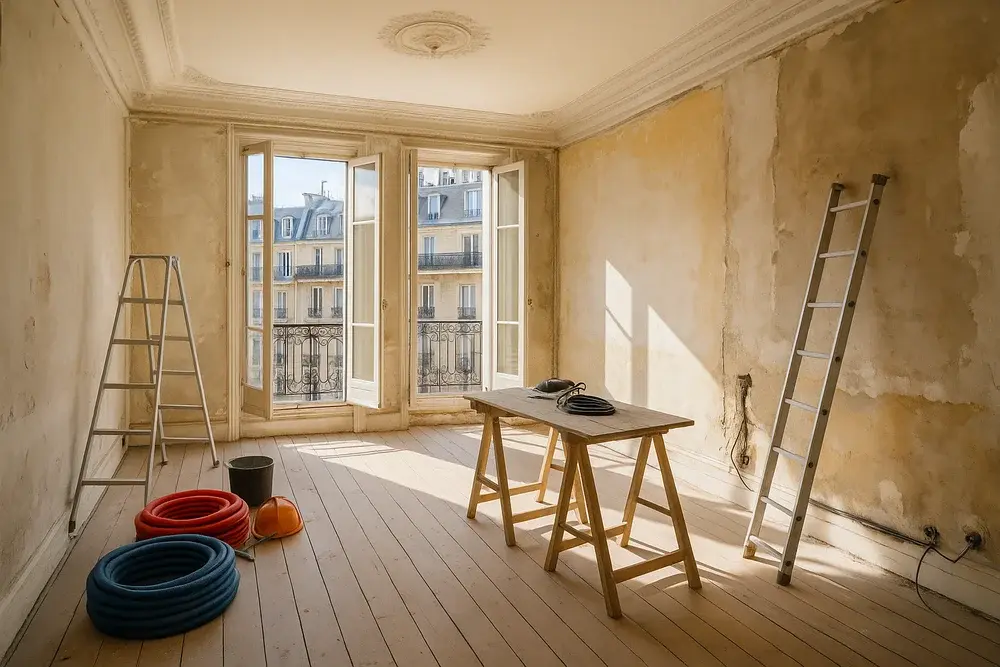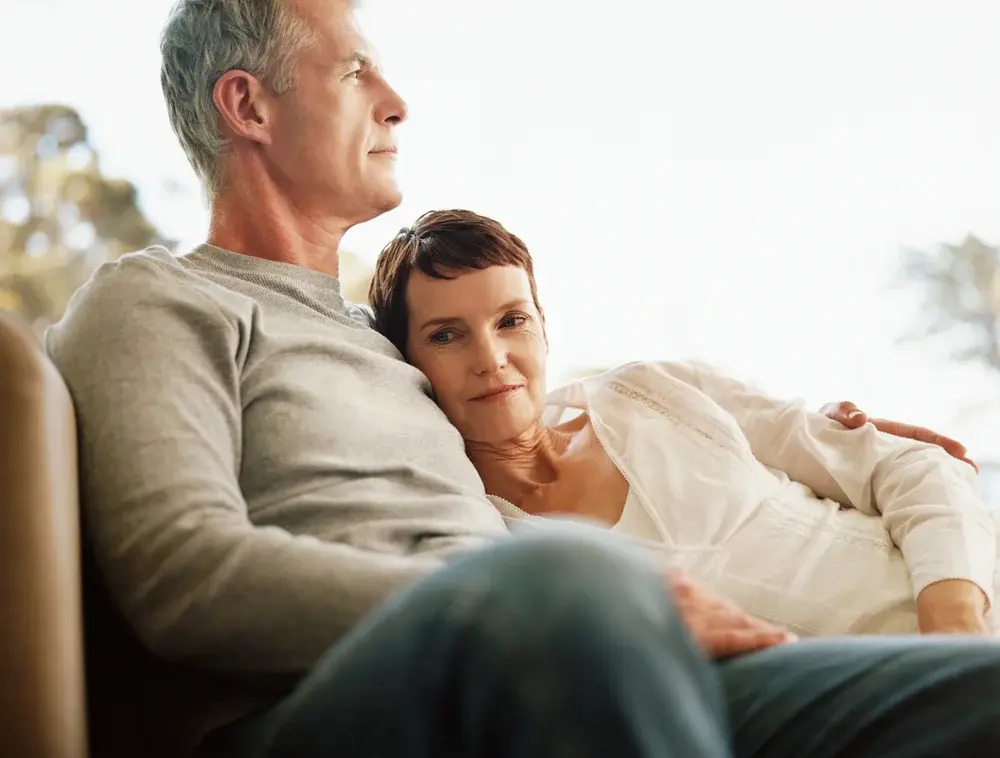Thermal kettles: causes, consequences and solutions to fight against homes that are too hot
At the dawn of a summer where temperatures are becoming more and more extreme, many homes in France are turning into real “thermal kettles”: unliveable, uncomfortable and sometimes dangerous for their occupants.

According to the Foundation for the housing of the disadvantaged, nearly a third of homes are now affected and more than 40% of tenants suffered from the heat in their homes during the summer of 2024.
Faced with this alarming reality, deputies from seven political groups are proposing a law to require owners to install equipment such as shutters or blinds and fans, in order to guarantee a minimal summer comfort. The Energy performance diagnosis DPE could also include a Note “summer comfort” in real estate ads, thus increasing the visibility of this problem.
In this article, we'll look at why this situation has become a major real estate issue : first, what is a kettle housing, what consequences this can have for residents and owners, then what concrete and regulatory solutions are emerging to respond to them.
1. Why are homes getting too hot?
The phenomenon of thermal kettle housings is explained by a combination of climatic and architectural factors. First, the multiplication of Heat waves in France causes high temperatures for several days in a row, without sufficient nocturnal cooling. Cities are particularly affected due to urban heat island : concrete, tar, dark facades and poor vegetation store heat during the day and release it at night, preventing any drop in temperature.
But beyond the climate, the very architecture of some buildings accentuates the problem. Homes located under the roofs or on the top floor, with poorly thought-out thermal insulation, are the most exposed. Large south-facing glass surfaces, highly sought after for luminosity in winter, become heat traps in summer when sun protection (shutters, external blinds, sun shades) are absent. Finally, many old buildings were not designed for a climate where temperatures regularly exceed 35°C. Past energy renovations have often favored insulation against the cold without taking into account the summer comfort.
The result: homes that heat up quickly, store heat and remain suffocating for several days, undermining the comfort, health and quality of life of their inhabitants.
{{cta-vert-en}}
2. What are the consequences for residents?
Living in a home that is too hot is not only uncomfortable, It's also dangerous. Prolonged heatwaves increase fatigue, sleep disorders, dehydration and increase health risks, especially among the elderly, young children and frail people. Sleeping several nights in a row in an apartment at more than 30°C is challenging and can lead to discomfort or hospitalizations in case of hot weather.
Beyond health, excessive heat has a direct impact on daily life : inability to work or concentrate while teleworking, need to leave your home to find a cooler place, discomfort in domestic or family activities. Many tenants and owners find themselves forced to invest in fans, mobile air conditioners or thermal curtains urgently, with no real sustainable gain.
Finally, this problem weighs on the perceived value of the property. An apartment or a house known to be very hot in summer lose their attractiveness, especially for families or seniors who are sensitive to the issue of thermal comfort. Buyers are becoming more and more attentive to summer insulation. The presence or absence of sun protection equipment can influence their purchase decision.
3. Impact on the real estate market
La The question of thermal comfort is in the process of becoming a decisive criterion in the valuation of real estate. Until recently, energy performance was mainly evaluated in terms of heating and winter insulation. Now, exposure to excessive heat and the ability of a home to stay cool in summer are increasingly weighing in the balance.
Buyers, especially in dense urban areas like Paris, are looking for homes that offer a good summer comfort, with shutters, external blinds, sun shades or reversible air conditioning. In some cases, the perception of an apartment that is too hot can lead to downward negotiations or even to withdrawals. Properties located on the top floor, without attic insulation or sun protection equipment, thus become more difficult to sell or rent, especially if the energy performance diagnosis (DPE) highlights the risk of overheating.
This trend is reinforced by legislative news. The bill to incorporate the Summer comfort in the obligations of landlord owners could accelerate market change. In the near future, a home classified as a “thermal kettle” could be considered an indecent home if no solution is provided, like thermal colanders for the cold.
Finally, for investors, anticipating this evolution is becoming a strategic challenge: integrating sun protection and summer thermal insulation when acquiring or renovating a property is now a strong lever for valorization and rental security.
{{cta-bordeaux-en}}
4. What solutions to cool a home that is too hot?
Faced with rising temperatures, several solutions exist to improve the thermal comfort of a home and limit overheating.
Passive solutions
So-called “passive” solutions are the most efficient and sustainable, as they do not consume electricity. They consist in preventing heat from entering:
- Install roller shutters or outdoor blinds : they block solar radiation before it reaches the windows, thus considerably reducing the indoor temperature.
- Posing solar films On the windows : they reduce calorific intake while allowing light to enter.
- Vegetate the immediate environment : a tree in front of a window, climbing plants on a facade, or a green roof create shade and refresh the ambient air.
- Optimizing natural ventilation : creating air currents by opening windows wisely early in the morning and late at night allows the heat accumulated during the day to be evacuated.
Technical solutions
When passive solutions are not enough, technical equipment can complement the approach:
- Install a reversible or mobile air conditioner : the most radical solution, but also the most energy-consuming. A fixed air conditioner is still more efficient than a mobile one.
- Use a fan : it does not lower the temperature, but creates a feeling of freshness thanks to the movement of the air.
- Installing a reversible heat pump : it provides heating in winter and air conditioning in summer, with better efficiency than a conventional air conditioner.
Renovation work
For old properties, work can sustainably improve summer comfort:
- Insulate the attic or roof : In summer, up to 30% of the heat enters through the roof.
- Change windows for reinforced insulated glazing.
- Provide sunshades or roof caps on the most exposed facades.
These solutions increase the value of the property and anticipate future regulations on summer thermal comfort.
5. Towards a new regulation?
Faced with the climate emergency and the multiplication of heatwaves, the question of Summer comfort is entering real estate legislation. The Environmental Regulation 2020 (RE2020) already includes a summer comfort indicator for new buildings, requiring developers and architects to design buildings capable of limiting overheating without systematically using air conditioning.
But for the former, the regulations are still in their infancy. One trans-partisan bill, filed in June 2025, aims to require landlords to equip their homes with external shutters or blinds and fans when they are exposed to excessive temperatures. The objective is to extend the concept of “decent housing” to summer thermal comfort, in the same way as what has been done for energy strainers concerning refrigeration.
Ultimately, the Energy Performance Diagnosis (DPE) could incorporate a Note “summer comfort”, visible on real estate ads. This would allow buyers and tenants to know the heat exposure of a property, to negotiate its price or rental conditions accordingly.
For owners and investors, anticipating these regulatory changes is becoming a real strategic challenge. A property renovated to improve its summer comfort will not only be more attractive. It will also comply with future legal obligations, thus maintaining its value in a market that is increasingly attentive to these criteria.
{{cta-vert-en}}
Conclusion
The problem of accommodations that are too hot, long underestimated, is now becoming a real challenge for the real estate sector. With summer temperatures constantly rising and heatwaves becoming more frequent, summer comfort is now an essential criterion, as important as winter energy performance.
For owners, anticipating this change is an opportunity to value their property and to ensure their sustainability in a rapidly changing market. For buyers and tenants, this is an element of comfort and health that should not be overlooked.
Faced with these climate and regulatory changes, a question arises: Is your home ready for the next heatwaves?




